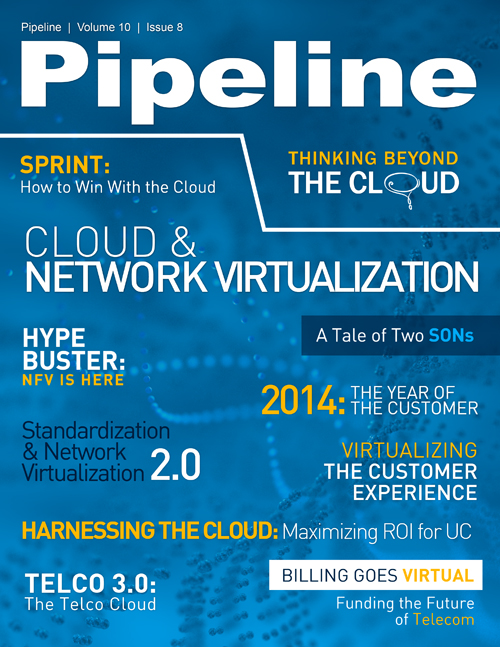Thinking Beyond the Cloud
A good portion of so-called "cloud services" do not meet the standard defined by the National Institute of Standards and Technology.
Hybrid and phased: how carriers leverage the cloud
We see several strategies among carriers for moving into the cloud. From an infrastructure-as-a-service (IaaS) perspective, there are examples of organic strategies, building a cloud computing
offering in-house, like we see from Tata Communications. Other CSPs, like Verizon and CenturyLink, have taken a different approach and acquired cloud computing companies in order to quickly
get to the front of the pack. In several other cases, carriers are transitioning hosted services to cloud services, or converging managed services with the cloud's virtual infrastructure. "Many
cloud solutions from CSPs for business customers are part of a managed services offer where they provide cloud services along with data lines (T1 lines) into their location, and varying set of IT
data center services to support the infrastructure of the cloud, such as security," noted Sanjay Kumar.
Brian Kracik, Director Communications Industry at Oracle, explained how CSPs have moved into the cloud. "CSPs have generally started with compute services and many of the CSPs are investing in datacenter infrastructure," he said. "The IaaS space is quickly being commoditized, and we see that CSPs are moving to differentiate themselves by exploiting their largest asset, the network."
In the software-as-a-service (SaaS) category, it's all about partnerships, says Nava Levy, vice president, SaaS/Cloud Solutions, cVidya. "To provide SaaS apps, CSPs are often leveraging partnerships. For example, Mozy for back up as a service (CSPs): China Telecom, Vodafone, Cox; Microsoft employee productivity apps with UPC: Vodafone, Telstra and O2." Partnerships allow CSPs to accelerate TTM and play in areas where they might not have sufficient expertise, such as the IT domain. "Some of the CSPs have selected cloud apps aggregators/brokers such as Jamcracker (Telstra, TELUS), Parallels (Charter, Telekom Austria, Telekom Malaysia) and AppDirect (Bell Canada) so that they can deliver quickly a one stop shop for enterprise software for SMBs," explained Levy.
Platform-as-a-service (PaaS) is the least mature category, as far as offerings from CSPs. In most cases, CSPs are leveraging third-party resources to offer a PaaS solution, like AT&T and
OpenStack. John Landau, Senior Vice President of Global Managed Services, Tata, agreed that PaaS offerings from carriers are quite a ways behind other cloud offerings. "CSPs variously offer IaaS
and SaaS to growing networks of customers. General purpose PaaS, however, is a less mature offering family at present."
The beauty and promise of cloud as a service is that it's not just Tier 1 operators who can afford to move into the cloud. Smaller CSPs strike partnerships to sell third-party cloud services (Swisscom is reselling Verizon's cloud services), and companies like CHR Solutions enable smaller telcos to offer cloud computing services to their customers on demand, with no infrastructure investment.




















